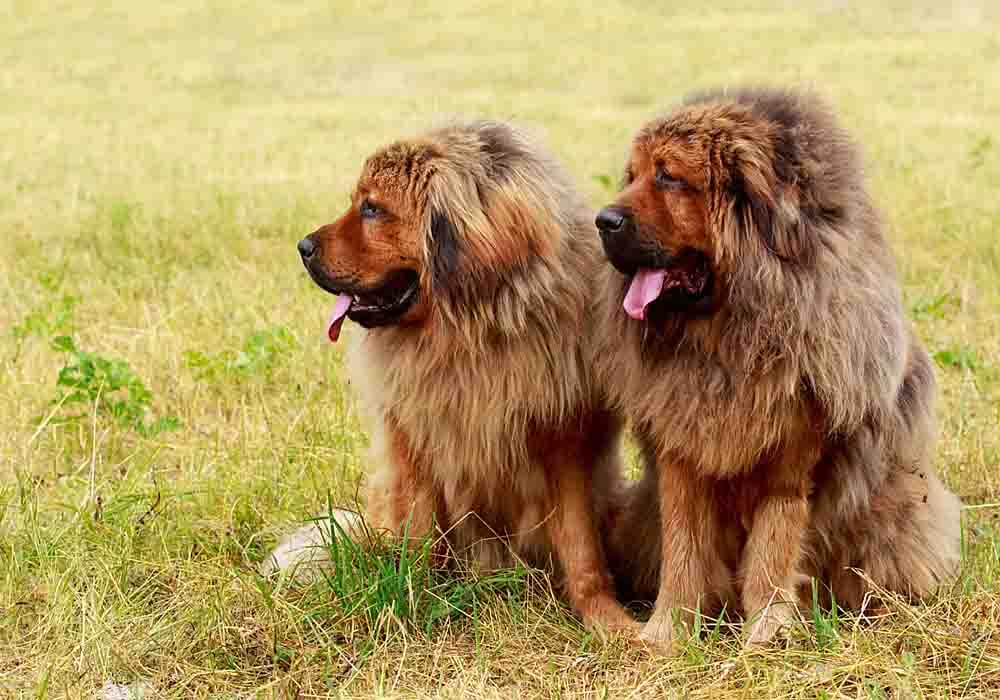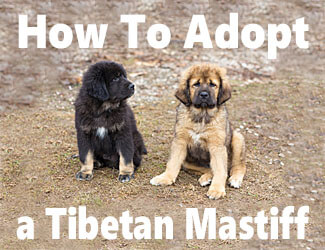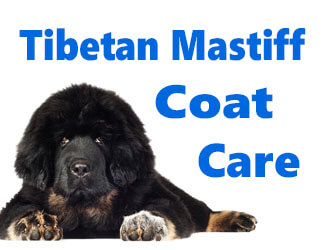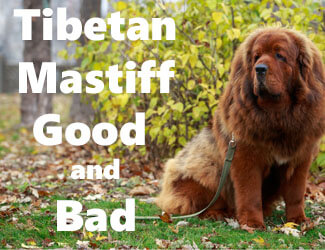Tibetan Mastiff Good And Bad
12 Pros and Cons About This Unique Breed
by Ken Alden
With the American Kennel Club recognizing 193 different dog breeds—and way more that they don't—it can be difficult to narrow down which one is right for you. It's important to do your research to know what you're in for. If you’re thinking of getting a Tibetan Mastiff, it is essential that you know their pros and cons.
The Tibetan Mastiff Good And Bad Include...
Good…
- They don’t shed year round
- They are prone to minimal health conditions
- They make great family dogs
Bad…
- They’re independent thinkers making them a bit hard to train
- They can be loud barkers and they do like to slobber
- You will need to keep them leashed because they’ll wander
If you're looking into bringing a Tibetan Mastiff home, keep reading to learn more about the ups and downs of keeping one as a pet. Remember, dogs require breed-specific care, so be sure you can provide for it adequately before bringing one home. Read More Below...
Pro-tip: Ever try lifting a Tibetan Mastiff? Their weight can hurt not only your back but their joints when they hop down from cars, sofas or even your bed. To protect your back and theirs check out the best Mastiff ramps on Amazon.com now.

Pros of Tibetan Mastiffs
It's no secret that Tibetan Mastiffs make a highly intelligent, loving companion, but what else makes this breed a great dog to have as a pet? Keep reading to find out some pros of having a Tibetan Mastiff for a furry friend.
They Are Highly Independent
Obedience training is not required for the Tibetan Mastiff. They will naturally trust their own judgment and use their instincts to make decisions. This breed is very intelligent. Tibetan Mastiffs know how to please, so they may behave how they are asked for periods of time. However, they will ultimately listen only to what they want to do.
They Are Prone to Minimal Health Conditions
Luckily, there are minimal health issues that Tibetan Mastiffs
are typically prone to. They are fairly healthy dogs for the most part.
Potential ailments include elbow and hip
dysplasia, rare eye issues, and
hypothyroidism, but reputable breeders should be screening their dogs for
these prior to breeding.
They Are Incredibly Loyal
It may take your Tibetan Mastiff a while to come around to you or other new people. It is normal for them to act aloof before they really get to know someone. Although, after you have gained their trust and respect, you will have a companion for life.
As traditional herders, Tibetan Mastiffs are natural guard dogs, so they will be ready to protect their loved ones at all costs. However, this means that they are also territorial. When in shared, neutral spaces, they usually do well and ease up.
They Get Along Well With Other Dogs And Cats
The Tibetan Mastiff is fairly easy-going with other animals, especially if they have been socialized well at a young age or have grown up with them. When meeting new dogs, Tibetan Mastiffs may act aggressively out of dominance, but they can easily get along with other animals if supervised well. tibetan mastiff good and bad
They Don’t Shed...Most Of The Time
You won't have to worry about constantly finding dog hair all over your house because this breed doesn't shed regularly. Once a year, they do blow their coat, meaning they lose their winter coats to prepare for their cooler summer fur.
During this time, a great deal of fur will fall out, but luckily, it only happens once annually and is not an issue you have to worry about every day.

They do still shed...but how much when they do? Being big, hairy dogs we felt this topic deserved it's own, in-depth page. Please visit our Do Tibetan Mastiffs Shed? for more complete info.
Pro-tip: Tibetan Mastiff anxiety, aggression, destructive chewing, jumping up, fearfulness, and other behaviors can be controlled with the right training program.
Here’s a great course that addresses these issues along with many other dog training basics: Check it out now!
They Can Make Great Family Members
As long as your dog is exposed to children from an early age, Tibetan Mastiffs can make great friends with kids. As with all dogs, each individual member of a breed should be watched closely when interacting with children, but the pair can form an infinite friendship together.
If you're thinking of making one of these amazing dogs a family pet, we always encourage the adoption route instead of acquiring one from a breeder.

Just how well does this breed do with kids and babies? We offer additional insight in this in-depth article of ours.
Cons of Tibetan Mastiffs
There are many great advantages of having a Tibetan Mastiff as a companion. However, they do require some specific care and housing conditions. That's why not everyone is a suitable owner for this breed. Take a look to see the cons associated with these dogs.
Training Doesn’t Work Well for Them
As mentioned earlier, these dogs are very independent and make up their own mind about how they will act. Their intellect makes training a Tibetan Mastiff quite difficult. They are notorious for ignoring their owners if they don't trust them.
This means that Tibetan Mastiffs may display well-trained, learned behavior. However, they are prone to act purely instinctively. This breed loves to behave on their own will and may not listen to your instruction even when you have their respect.
You Need to Keep Them Leashed
Tibetan Mastiffs are traditionally nomadic dogs. Due to this, there is a good chance they will wander when off-leash. To prevent losing your pup, you must keep your dog on a leash or only allow them to roam in a fenced area that they cannot easily escape.
Pro-tip: Tibetan Mastiff's (and their owners) love dog crates…and for good reasons. Crates keep dogs from mischief while you're away, are perfect for house training, for traveling by car, and provide the dog a place to de-stress. Check out the best Mastiff crates on Amazon.com now.
They Require a Specific Household
There are many boxes in a checklist a family must tick in order to be a fulfilling house for a Tibetan Mastiff.
Patience with your pup, especially in their early years, is an absolute must. These dogs require a decent amount of exercise, but care must be taken to avoid overexerting them in their youth. If this happens, Tibetan Mastiffs may face several anatomical issues.
This breed is active in its adulthood but does not need to be involved in play like a tug of war or fetch to be entertained. These fluffy giants are known for conserving their energy and are not the type to have never-ending energy or stamina. Be sure to take your Mastiff for regular walks or let it wander around a large, well-fenced area.
Since these dogs are well insulated from their adaptation to colder climates, a Tibetan Mastiff is not suited for hot environments. Additionally, they'd rather be indoors than out, so make sure your house is big enough to support a dog that is 70 to 150 lbs (31.8 to 68.0 kgs) in weight.
Despite this, if your Tibetan Mastiff is bored, lacking sufficient exercise, or having too much inside time, they may act up destructively. These dogs are incredibly strong and large, so they will be able to chew your belongings and furniture up with ease.
They Can Be Loud and Messy
Though most Tibetan Mastiffs are not known for being overly vocal, they do have a tendency to find their voices at night. They have strong, loud barks, so be sure to keep an ear out for your pup while it's outside.
These dogs are also exceptionally slobbery. After they have a meal or drink of water, beware that these pups might leave a trail of drool throughout your house. And remember, they're large dogs, so they produce lots of it.
They Are Difficult to Entice With Food
This breed does not typically behave in a food-centric manner, so it is hard to reward them with treats. You will need to get creative in learning what your Tibetan Mastiff best responds to. Remember, always train them with positive reinforcement, never punishment.
They Are Not Hypoallergenic
If you are someone who suffers from allergies, this breed will not work well for you. While it does not happen regularly, Tibetan Mastiffs do blow their coats, so they are not compatible with those who are allergic to dog fur.
Tibetan Mastiff Good And Bad...Final Thoughts
If you can provide a Tibetan Mastiff with the care and attention they need, they can be great companions. Here is a quick summary of the pros of Tibetan Mastiffs:
- They only shed once a year.
- These dogs are incredibly intelligent and independent.
- Most Tibetan Mastiffs face minimal health conditions.
- Tibetan Mastiffs are very loyal.
- They get along well with most other dogs.
- If socialized properly, they can make great family members, even with children.
It's important to remember the specific needs of this breed as well. The cons of having a Tibetan Mastiff include:
- They don't take well to being trained.
- Tibetan Mastiffs shouldn't be trusted off-leash.
- The right house and care conditions must be provided.
- They can be noisy and messy pets.
- Not being food-centric makes it hard to reinforce positive behavior.
- They are not hypoallergenic.
Return to the top of this Tibetan Mastiff Good And Bad page

About the Author...
Ken Alden, a dedicated Mastiff owner for over eight years, is acclaimed for his expertise in care, grooming, and training. Read more About Me and my dog Shadow.
- Mastiff Guide Home ›
- Tibetan Mastiffs ›
- Tibetan Mastiff Good And Bad






